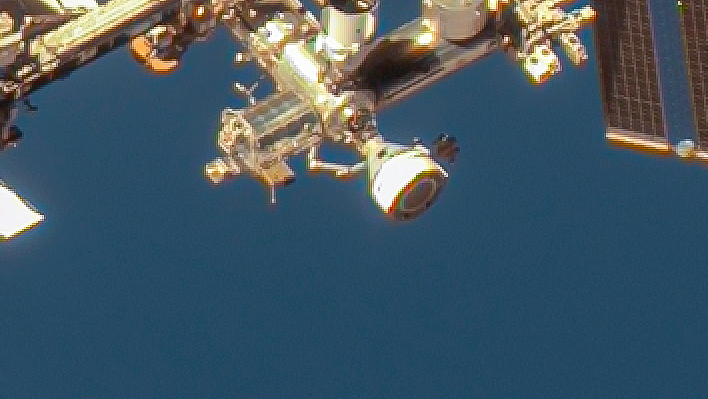Boeing’s Starliner capsule will depart the International Space Station without astronauts today (Sept. 6), and you can watch the action live.
A livestream of Starliner‘s homecoming will begin at 5:45 p.m. EDT (2145 GMT) today, featuring the capsule’s undocking at 6:04 p.m. EDT (2204 GMT). You can watch it here at Space.com, via NASA Television.
Landing, at White Sands Space Harbor in New Mexico, is scheduled about six hours later, on Saturday (Sept. 7) at 12:03 a.m. EDT (0403 GMT or 10:03 p.m. local time Sept. 6). NASA will livestream that event as well, starting at 10:50 p.m. EDT (0250 GMT).

Starliner’s Crew Flight Test (CFT) to the International Space Station (ISS) — the capsule’s first-ever human spaceflight — lifted off on June 5 and docked with the orbiting complex on June 6, although the first docking attempt was waved off. Starliner experienced helium leaks before launch and, during docking, five of its 28 reaction control system thrusters went offline.
Related: Boeing’s 1st crewed Starliner to return to Earth without astronauts on Sept. 6
CFT was originally supposed to last about 10 days. But NASA authorized a mission extension that eventually stretched to about three months, to allow for extensive ground and space testing on Starliner’s propulsion system before senior agency reviews authorizing the spacecraft to land.
NASA ultimately decided that sending CFT’s two astronauts, Butch Wilmore and Suni Williams, home on Starliner was too risky. So the duo will ride home on a SpaceX Crew Dragon in February 2025, while Starliner will return to Earth uncrewed.

SpaceX and Boeing both received multibillion-dollar-contracts from NASA in 2014 for astronaut flights, to fill the crew-carrying shoes of the space shuttle, which retired in 2011. At that time, it was expected those commercial crewed flights would begin in 2017. But technical and funding delays meant that SpaceX did not fly humans until 2020; Starliner waited four extra years, until CFT.
NASA, Boeing, Williams and Wilmore (who are both former U.S. Navy test pilots) have all emphasized the tricky nature of complex developmental projects in aerospace. Specifically, since everyone grapples often with the unknown on a test mission such as CFT, timelines are always subject to change. It’s unclear how CFT certification will be affected by Starliner’s latest issues, but NASA and Boeing will be examining the process in the coming months.

Starliner’s first uncrewed test flight to the ISS in 2019, the same year as SpaceX’s, did not go to plan; the Boeing capsule failed to reach the station due to technical glitches. Rerunning the mission required addressing dozens of issues; it was also delayed due to the COVID pandemic that erupted in early 2020.
The second uncrewed test flight of Starliner mostly went to plan in 2022, including an ISS docking, although Starliner faced some thruster issues as well. (How those are related to the CFT issues are still being investigated, but officials say it appears to be due to different causes.) CFT was supposed to launch in 2023, but the mission was delayed after issues with parachute loading and wiring wrapped in flammable tape were discovered.
CFT’s first launch attempt, on May 6, 2024, was delayed after a valve issue was discovered on Starliner’s rocket ride, a United Launch Alliance Atlas V. Post-scrub, officials found a small helium leak in one of Starliner’s thrusters.
While not an immediate launch hazard, the leak was investigated for safety reasons, and both NASA and Boeing uncovered a design vulnerability: If enough thrusters went offline, one of the re-entry modes would be affected. NASA certified a new entry mode after performing ground simulations with the CFT crew.
A second attempt at launch on June 1 was scrubbed due to a ground equipment issue, and then Starliner flew to space on the third try on June 5.



